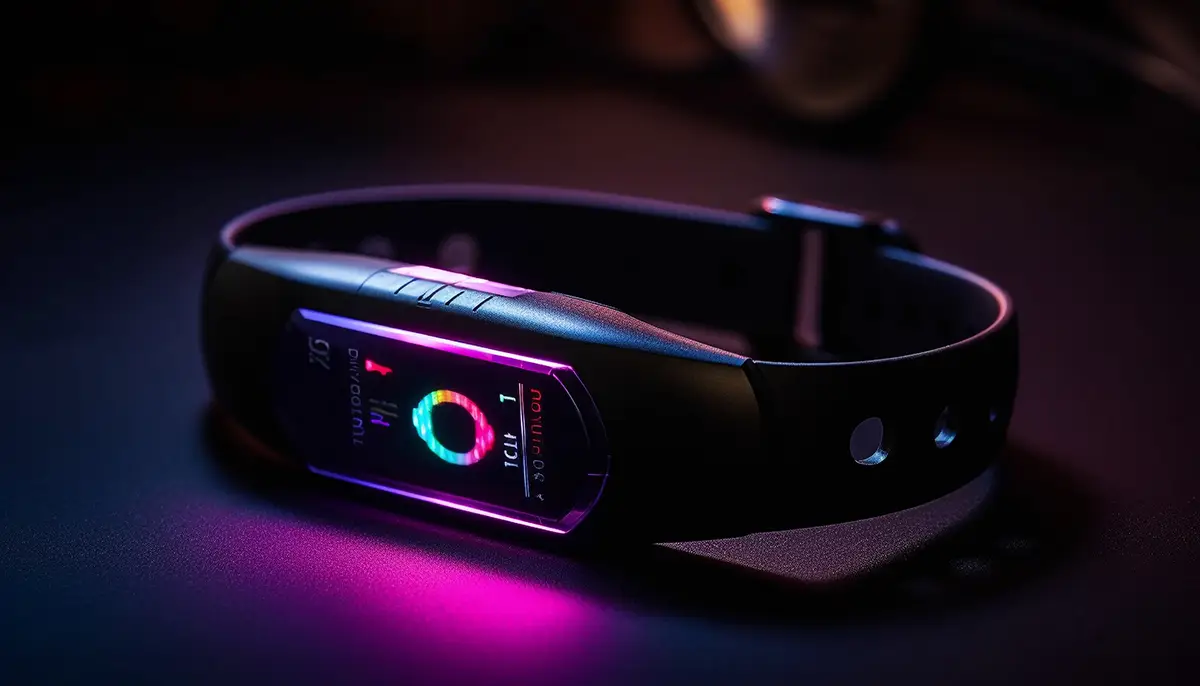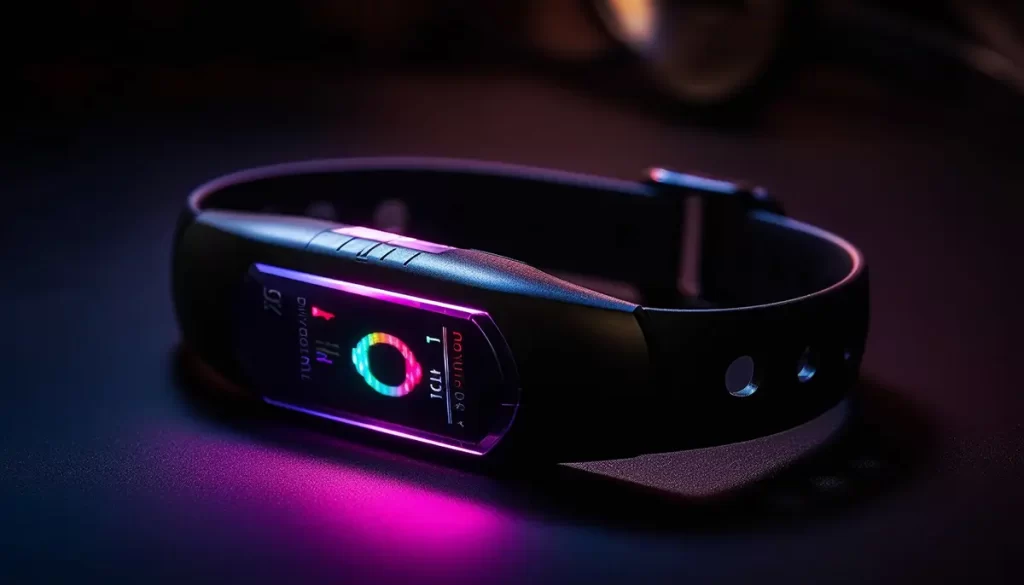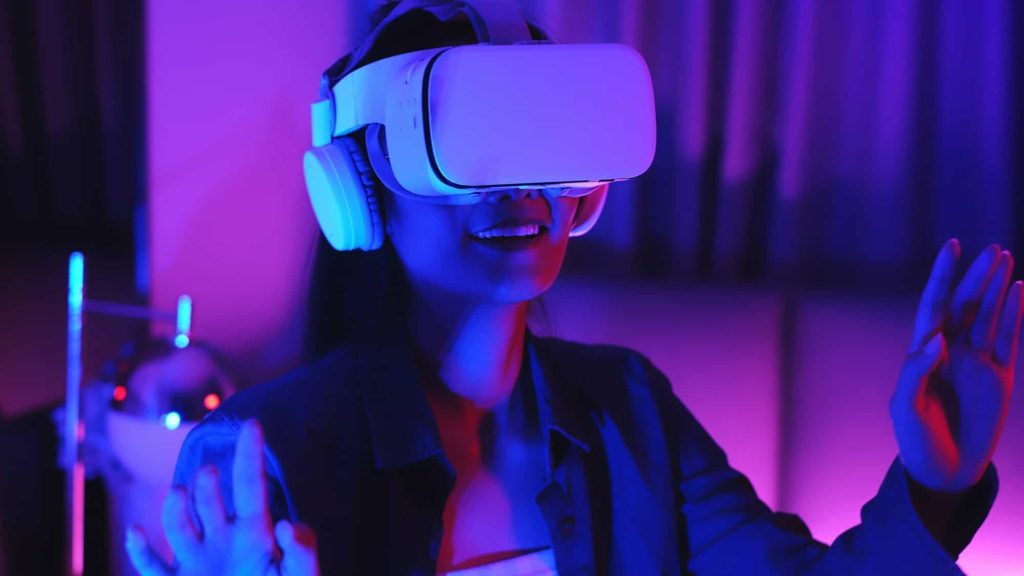Wearable health tech includes smart devices—watches, rings, patches, and even glasses—that track your body’s signals (like heart rate, sleep, steps, blood oxygen, and more) and turn them into useful information you can act on. Think of always-on sensors + an app that reveals patterns over time.
You can’t change what you don’t measure. Wearables can help you:
- Build better daily habits (move more, sleep better).
- Spot potential issues early (e.g., irregular heart rhythms).
- Share trends with your clinician during a visit.
Even when numbers aren’t perfect, the motivation and awareness are worth it for many people.
A recreational athlete with a history of rapid heart rhythms wore a smartwatch. After a squash match, his watch flagged high rates and possible irregularity. He already felt “off,” but the alert nudged him to get checked.
The flip side: more data without guidance can increase anxiety. The tech is powerful—but how we use it matters.
From Step Counters to Proactive AI
- Early days: simple step counters.
- 2018: Apple adds ECG and fall detection; irregular rhythm features receive FDA clearance and are studied at large scale.
- 2020–2024: mainstream watches add SpO₂, temperature sensing, and improved sleep tracking.
- 2025: smart rings launch on-finger ECG with FDA-cleared AFib detection; rugged watches add AMOLED and weeks-long battery. FDA proposes new pulse-ox guidance to address accuracy across different skin tones.
What Health Wearables Really Do
Core Measurements & Features
- Heart rate (HR) & trends: resting, exercise, variability.
- Heart rhythm checks: irregular pulse alerts; some devices include a single-lead ECG.
- Activity: steps, distance, intensity minutes, VO₂ max estimates.
- Sleep: duration, stages, consistency; “readiness/recovery” scores vary by brand.
- Blood oxygen (SpO₂): helpful context, not a diagnosis—especially important for people with darker complexions (see accuracy notes below).
- Safety: fall detection and SOS on many watches.
- Coaching & AI: predictive insights and trend nudges.
What the Evidence Says (Snapshot)
Do They Help?
Big evaluations show modest but real benefits:
- About 1,800 extra steps/day
- Roughly 40 extra minutes of walking/day
- Small average weight loss
How Accurate Is SpO₂?
Consumer devices vary. Some come close to clinical thresholds in lab tests, but results aren’t consistent and may be less accurate on darker skin. Treat readings as directional, not definitive.
Heart Rhythm Detection
In the Apple Heart Study (~420k participants), watch notifications often aligned with AFib on confirmatory patches. That said, population-level screening is still debated.
Bottom line: wearables are great for trends and nudges, but not for clinical diagnosis without medical validation.
Myths vs. Reality
- Myth: “Wearables are always right.”
Reality: Great for trends; not a replacement for clinical tests. - Myth: “They take the place of doctors.”
Reality: They support care; clinicians still confirm with medical-grade tools. - Myth: “Only athletes benefit.”
Reality: Everyday users tend to move more and sleep more consistently. - Myth: “Blood oxygen is always accurate.”
Reality: Skin tone can affect readings; in 2025 the FDA proposed guidance to improve fairness and labeling.
Real-World Value (Uses & Benefits)
- Daily accountability: rings/watches make goals visible.
- Sleep awareness: spot patterns (late nights, fragmented sleep).
- Safety: for some users, fall detection + SOS can be life-saving.
- Chronic condition support: share trend reports (HR, rhythm, sleep, blood pressure with compatible devices).
- Women’s health: cycle insights (brand-specific temperature features).
- Motivation loops: streaks, circles, badges—cheesy but effective for habit building.
- About anxiety: alerts without context can raise worry. Pair data with clear action plans (see checklist).
What’s New in 2025? (Rings, Watches & More)
Smart Rings Get Serious (and Medical)
- Circular Ring 2: on-finger ECG and FDA-cleared AFib detection, improved sizing flow, and about 8-day battery.
- If you’re buying, confirm local regulatory clearance and watch for app updates.
Notes: Several outlets covered the regulatory status at CES; some brand messaging calls out ECG “right out of the box,” positioning the ring alongside Oura and Samsung’s ring devices for heart-health use.
Rugged Watches Level Up
- Garmin Instinct 3: AMOLED options, tougher build, flashlight, and long battery life (weeks on AMOLED; “unlimited” on solar with sufficient light). Great for outdoors-first users.
Specs commonly highlighted: AMOLED shift, multiple sizes, water resistance, MIL-STD-810 toughness, and solar endurance.
Samsung’s Wearables Push
- Galaxy Ring and the latest Galaxy Watch models focus on sleep and heart health insights.
- ECG/irregular rhythm features are available in many regions (availability varies—always check your country).
SpO₂ Fairness & Accuracy
- The FDA proposed 2025 draft guidance to improve pulse-ox accuracy across skin tones via more diverse testing and clearer labeling.
- Important because oximeters historically may overestimate oxygen on darker skin.
Be Careful With New Claims
- Early-stage demos—like AI smart glasses that auto-summarize meetings or cuffless ultrasound blood pressure—are promising but not fully validated.
- Until peer-reviewed evidence or regulatory approval exists, mark as [VERIFY].
Wearable Health Tech: Common Questions (FAQ)
- What is wearable health tech?
Smart devices that track health signals (HR, rhythm, sleep, SpO₂) and show patterns you can use to make changes. - Are wearables medical tools?
Some features are cleared (e.g., Apple’s irregular rhythm/ECG, Samsung’s ECG/IHRN, certain rings for AFib). Most features are wellness-oriented and need clinical confirmation. - Do wearables really make you healthier?
On average, yes—small increases in steps/activity and small weight loss, especially when combined with coaching. - How precise are SpO₂ readings on watches?
It depends on device and skin tone. Treat readings critically and follow device instructions. - Can my watch detect AFib?
Irregular pulse alerts and on-device ECGs can help flag AFib. Large studies show good alignment with patch ECGs. Always discuss results with a clinician. - Which device is the “best”?
- All-around: Apple Watch, Galaxy Watch
- Endurance/outdoors: Garmin Instinct / Forerunner
- Sleep-first, minimal screen: Oura
- On-finger ECG: Circular Ring 2 (country/clearance dependent)
- Should I worry about false alarms?
Sometimes. False or non-actionable alerts happen and can increase anxiety. Have clear rules for when to call, log, or ignore. - Will my doctor use my wearable data?
Some do—especially concise trend exports (HR, sleep, AFib episodes). Raw app screenshots rarely drive decisions without clinical context. - Are subscriptions worth it?
Only if the extra insights keep you motivated and you use them weekly. - What about privacy?
Read each brand’s data policy. Opt in to sharing thoughtfully, and enable passcodes/biometrics on your phone and account.
Simple Action Checklist (Copy/Paste)
- Pick one primary goal (fitness, sleep, rhythm, safety).
- Match the device to that goal—don’t overbuy.
- Verify approvals (ECG/AFib features vary by country).
- Set alert levels conservatively at first.
- Plan your routine (when you’ll wear, charge, review).
- Log context (illness, travel, alcohol, heavy training).
- Export trends (1-page summary) for your clinician.
- Re-evaluate at 90 days: keep if motivation ↑ and anxiety ↓.
Important Notes of Caution
Equity: Pulse-ox accuracy can vary by skin pigmentation; if values are concerning, confirm clinically.
Medical: This content is educational and not medical advice. Don’t ignore professional guidance because of a wearable reading. Seek urgent care for chest pain, severe shortness of breath, fainting, or neurologic symptoms.
Regulatory: Features like ECG/AFib alerts are region-specific. Check availability in your country and app store.




